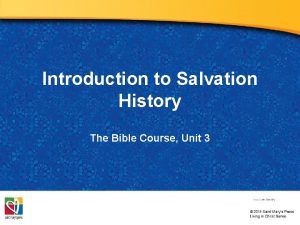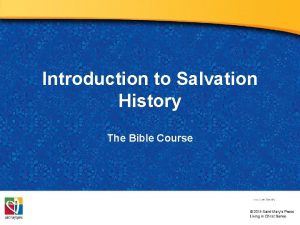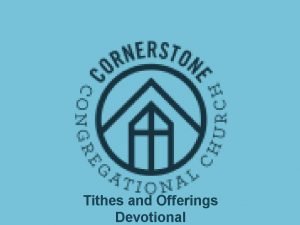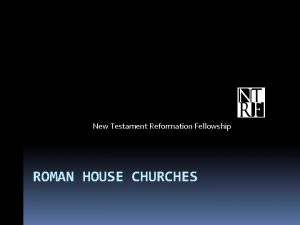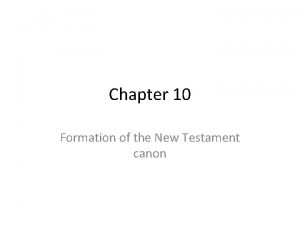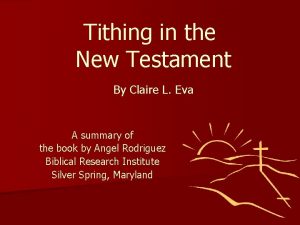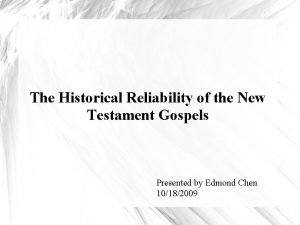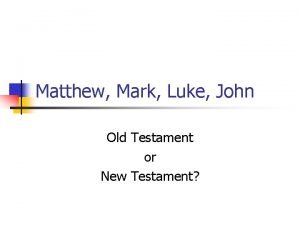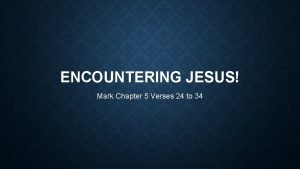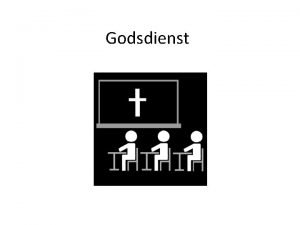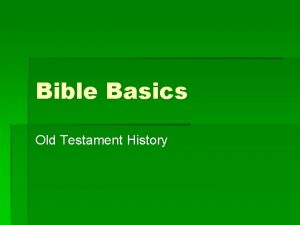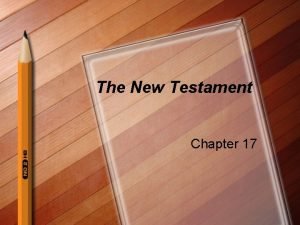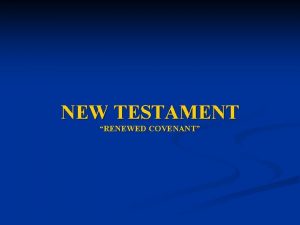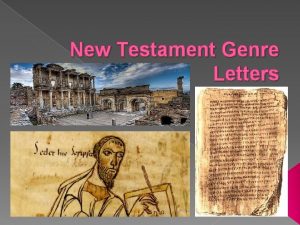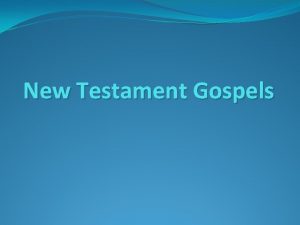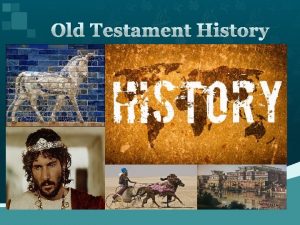New Testament History Lecture Two The New Testament














- Slides: 14

New Testament History Lecture Two The New Testament in Our Modern World

Modern Translations ¨ Latin Vulgate – Produced by Jerome in late 4 th Century – Vulgate—means “common” or “commonly used” • Renders scripture in the common Latin of the Western Roman Empire • Becomes THE Bible of the Catholic Church – Western Roman Empire Soon Falls • Education/literacy go in decline • New languages develop in Europe • No new translations for 1, 000 years

Modern Translations ¨ English Translations – John Wycliffe • “Morning Star” of the Reformation • Desired to make Bible accessible – Only the high educated know Latin – Church opposes any new translation • Produced first complete English Bible in 1384 – Translated from Jerome’s Latin – Version is condemned by the church in 1408 – 40 years after his death, Wycliffe is declared a heretic

Modern Translations ¨ English (continued) – Johannes Gutenberg • Invented moveable type printing press in 1455 A. D. • Produces the first “published” Bible – Martin Luther • Started the Protestant Reformation in 1517 A. D. – A protest against administrative corruption – Becomes instantly popular throughout Europe • Produced a German translation (1522 -1534 A. D. ) – Translates from original Hebrew and Greek – 1 st complete European Bible from original languages

Modern Translations ¨ English (continued) – William Tyndale • 1 st English translator to work with original languages • Produced first published English N. T. from the original Greek (1525 A. D. ) – Persecution prevents him from finishing O. T. – Branded a heretic and burned at the stake in 1536 A. D. – Miles Coverdale • Produced the first publish English Bible with both the Old and New Testaments • Work based on: – – Tyndale Luther Zwingli Latin

Modern Translations ¨ King James Version – Authorized by King James I • Appoints 54 scholars to do the work • Assignments takes 7 years – Finished in 1611 A. D. – Relied on the oldest manuscripts available – Result is the most popular English of all-time • The Bible of Shakespeare • Still popular today

Modern Translations ¨ 1 st Revision of the KJV published in England in 1881 & 1885 ¨ American Standard Version published in 1901 ¨ Revised Standard Version published in 1946 & 1952 ¨ New International Version completed in the 1970’s

Modern Studies of the New Testament ¨ Lower Criticism – Only one type…Textual Criticism – Evaluates the available text(s) of the N. T. • Before the N. T. was a collected canon, the various books existed as individual manuscripts • We have no “autographs” (original manuscripts) – Everything we possess is a copy – No 2 copies are exactly alike – Goal: To determine which of the variant readings is closest to the original

Modern Studies of the New Testament ¨ Higher Criticism – Questions: authorship, sources, editing, transmission, historical influences – Types • Source—Seeks to answer two questions: – Who were the authors? – What sources did they use when writing? – Focuses on the Gospels, specifically the “Synoptic Gospels” • “synoptic” means “similar” • Matthew, Mark and Luke are the “similar” or “synoptic” Gospels

Modern Studies of the New Testament ¨ Source Criticism (continued) – Relationship Between the Synoptic Gospels • Share similar structure – – – Baptism & Temptation of Jesus Ministry in Galilee Confession of Peter Journey to Jerusalem Trial, crucifixion, resurrection • Also dissimilar – 8% of Mark is unique to Mark – 50% of Matthew is unique to Matthew – 59% of Luke is unique to Luke

Modern Studies of the New Testament ¨ Source Criticism (continued) – Results • Most now believe Mark was 1 st written Gospel • Mark was probably the primary source of both Matthew and Luke • Matthew and Luke both had access to another unknown source – Referred to as the “Q” source (from the German word “quelle” meaning “source”) – Explains the 200 -250 verses in Matthew & Luke that are uniquely similar

Modern Studies of the New Testament ¨ Types of Higher Criticism (continued) – Form Criticism • Seeks to discover history of Gospel materials during their oral/pre-literary stage • Studies the form/setting of these oral materials – DEATH OF THE PILLSBURY DOUGHBOY – Isolated materials were collected by the early church • Would be retold during sermons, Lord’s Supper, etc. • Collection grew as various questions arose

Interpreting the New Testament in a 21 st Century World ¨ Comprehending the Culture of the N. T. – All writings are “cultural” writings – Importance of values & norms • Norms: what is proper, right/wrong in a community – Norms are a reflection of values • Values: glue that holds a community together • Values of the New Testament World – Honor & shame • Ascribed honor • Acquired honor – Dyadic social personality – World of limited good

Interpreting the New Testament in a 21 st Century World ¨ Basic Interpretive Tools – Hermeneutics: the science of interpreting ancient documents – “Timely” versus “timelessness” – Basic interpretive principles • • Grammatical principle Contextual principle Historical principle Theological principle
 01:640:244 lecture notes - lecture 15: plat, idah, farad
01:640:244 lecture notes - lecture 15: plat, idah, farad Salvation history
Salvation history Salvation history in the old testament
Salvation history in the old testament Encouraging words for offering and tithes
Encouraging words for offering and tithes House churches in the new testament
House churches in the new testament Tithe in new testament
Tithe in new testament Encountering jesus in the new testament answer key
Encountering jesus in the new testament answer key Encountering jesus in the new testament
Encountering jesus in the new testament The formation of the new testament canon
The formation of the new testament canon Tithing in the new testament
Tithing in the new testament The historical reliability of the gospels
The historical reliability of the gospels Test: the general epistles new testament survey
Test: the general epistles new testament survey New testament reformation fellowship
New testament reformation fellowship John old or new testament
John old or new testament Encountering jesus in the new testament
Encountering jesus in the new testament

